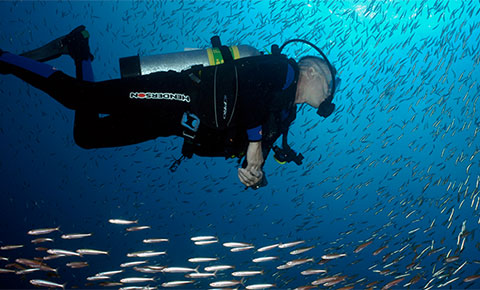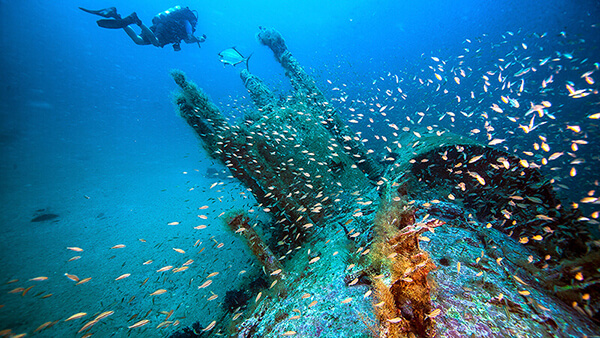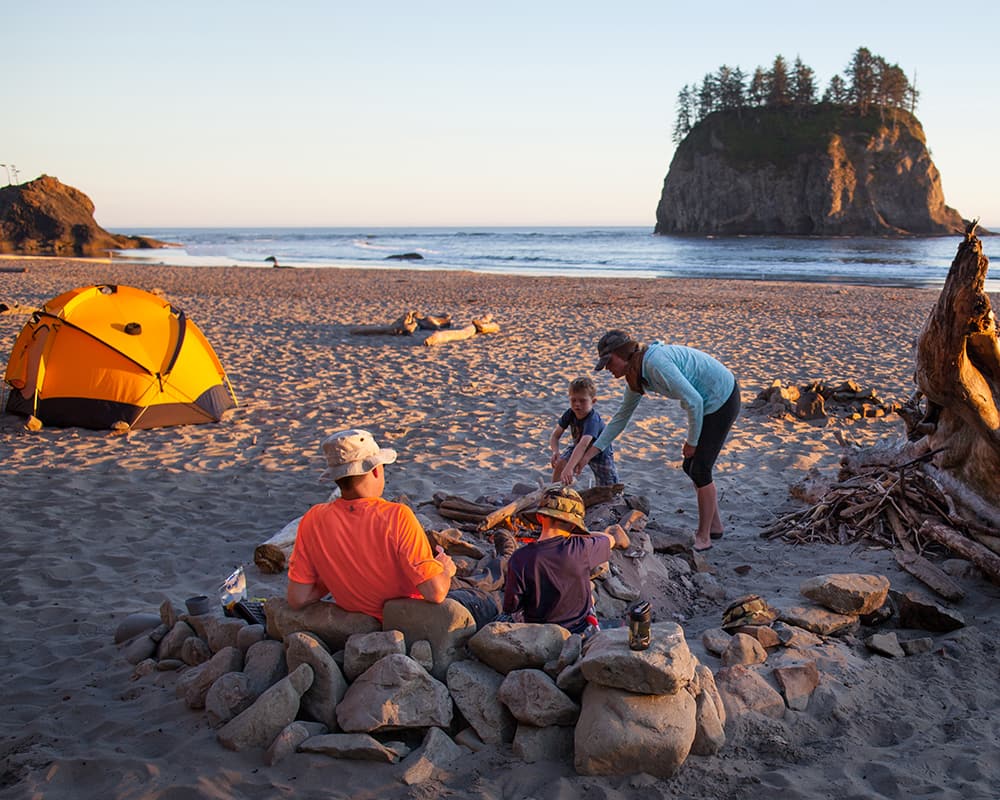Things To Do
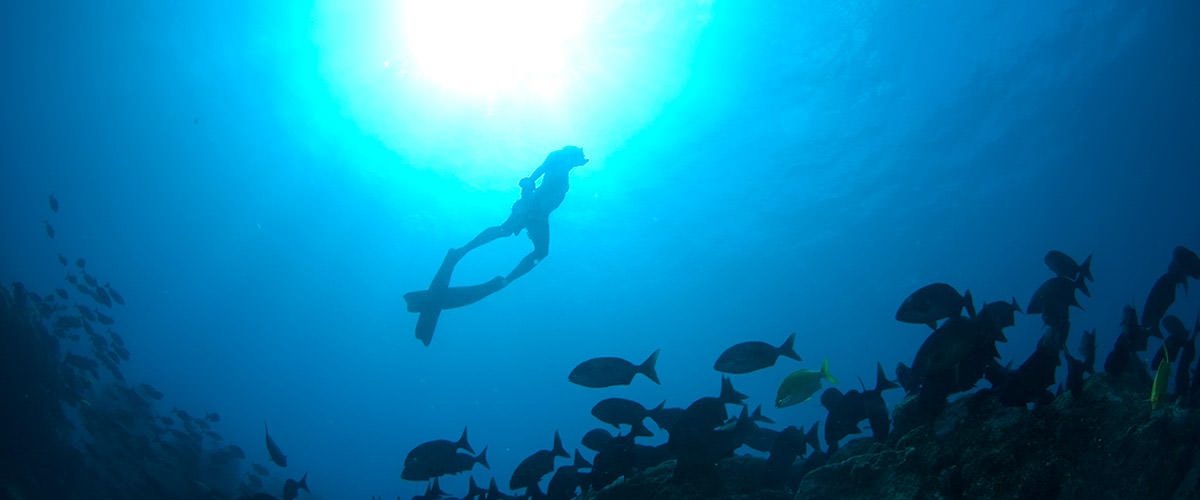
Sanctuaries provide an idyllic setting for a variety of recreational activities. From wreck diving to whale watching, satisfy your taste for adventure while building a connection to these special ocean places. Explore the many ways visitors like you enjoy their sanctuary by navigating through the options below.
Diving and Snorkeling
Whether you want to immerse yourself in towering kelp forests, view unique coral reef ecosystems, or explore sunken relics of maritime history, the waters of national marine sanctuaries provide abundant opportunities for divers and snorkelers of all experience levels.
Find out more about the underwater adventures that await you and tips on how to responsibly enjoy these treasures here.
Fishing
Recreational fishing is a favorite American pastime, providing opportunities for people of all ages to experience the aquatic environment. Fortunately, while national marine sanctuaries protect underwater ecosystems, they also allow a variety of recreational uses.In fact, recreational fishing is allowed in most of the waters within sanctuaries! So get out into a national marine sanctuary and enjoy top-notch fishing, while supporting the long-term protection of our nation's underwater treasures by finding out more about recreational fishing best practices.
Fishing at sanctuary sites: American Samoa, Channel Islands, Cordell Bank, Florida Keys, Flower Garden Banks, Gray’s Reef, Greater Farallones, Hawaiian Islands Humpback Whale, Mallows Bay-Potomac River, Monterey Bay, Olympic Coast, Stellwagen Bank, Thunder Bay and Wisconsin Shipwreck Coast

Boating
Visitors interested in staying above the waterline will enjoy the scenic surroundings, wildlife viewing opportunities and fishing spots accessible by boat. We welcome guests to venture out to sea while being conscious and respectful of other boaters and marine life. So, whether your final destination is the sanctuary or you are just transiting through, take care to avoid striking marine mammals, sensitive habitats, such as coral reefs or seagrass beds, and fishing gear. Plan ahead and take advantage of navigational maps and marine forecasts to make for a pleasant and safe experience on the water! Check out NOAA's collection of free resources for recreational boaters here.
Extra info about key spots: Monterey Bay, Thunder Bay, Stellwagen Bank, Florida Keys, Hawaiian Islands
Experience Maritime Heritage
National marine sanctuaries are living museums of America’s rich maritime history - stories of exploration, immigration, and creation of coastal communities. Sanctuary waters protect and preserve countless shipwrecks and even naval battlefields!
Throughout the National Marine Sanctuary System you have the opportunity to explore, discover, and appreciate historic, cultural, and archeological sites and stories that represent the connection between humans and our Great Lakes and ocean areas.
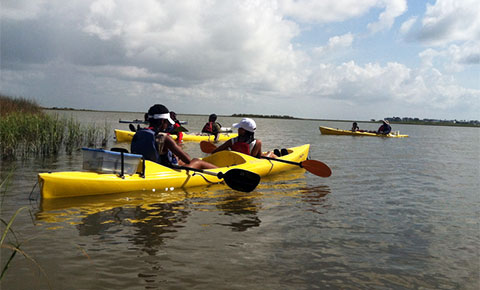
Paddle Sports
Canoeing, kayaking and paddleboarding provide participants with a unique, interactive avenue to experience all that national marine sanctuaries have to offer! Each site invites a new adventure, with paddling opportunities readily available and accessible from shore at most sanctuary locations.
Check out a couple of our paddling hotspots: Mallows Bay, Monterey Bay, Thunder Bay
Surfing
Mavericks. Waimea Bay. Pipeline. These places are some of the most revered surf spots on Earth, but there's another thing they have in common: They are all found within national marine sanctuaries!
For more, check out these other surfing features: Catching the Wave: Surfing in the National Marine Sanctuaries and Power of Place: Surfing Olympic Coast.
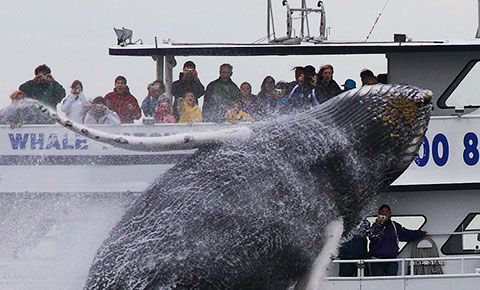
Whale Watching
Come view our planet’s largest mammals in their natural habitat! Tour operators throughout California, Hawaii and Massachusetts offer whale watching excursions into sanctuary waters for those wishing to view these magnificent creatures, and there are plenty of sites to spot them from shore too! Before you go, take a moment to educate yourself on the responsible way to whale watch.
Top Spots to whale watch: Monterey Bay, Stellwagen Bank, Hawaiian Islands Humpback Whale, Olympic Coast
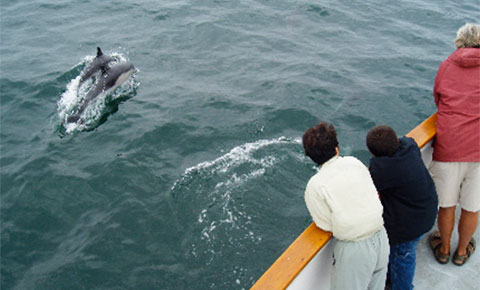
Wildlife Viewing
The vast biodiversity that lies within the thirteen national marine sanctuaries creates an extraordinary opportunity to observe dolphins, sea otters, birds and many other creatures that inhabit our shores and waters. As visitors to these special ocean environments, it is important that all guests promote responsible visitation. Being mindful of your actions during your visit will reduce potential harm to our marine life and resources.
View some wildlife in these sanctuaries: Olympic Coast, Monterey Bay, Cordell Bank, Hawaiian Islands Humpback Whale, Stellwagen Bank, Florida Keys

Tide Pooling
The rocky shores of sanctuary waters create a unique and biologically rich environment where many of our ocean’s underwater inhabitants can be viewed in plain sight. Visitors of all ages enjoy exploring tide pools and learning about the plants and animals that make up this remarkable marine habitat. Learn about responsible wildlife viewing.
Tide pooling hot spots: Monterey Bay, Olympic Coast
Camping
Release the tent-sion with a camping trip on the shores of your national marine sanctuaries and in nearby national parks, national seashores, state parks, and more! Camping is an excellent way to visit some of America’s most treasured places on land and by the ocean or Great Lakes. No matter what type of camping you prefer—backcountry, primitive, car camping, RV, or “glamping”—there are great options for everyone! Remember to recreate responsibly and leave your campsite better than you found it.

Sightseeing and Heritage Trails
By land or sea, these trails will point the way to highlights of our vibrant marine ecosystems and hidden jewels of our country’s maritime history.
The Whale
Trail
Looking to follow our finned marine friends, but don’t know where to start? Check out
the Whale Trail to find the locations nearest you and learn about what you can do to
protect them.
Outer Banks Maritime
Heritage Trail
Discover the shipwrecks, historic lighthouses and marine environment that define the
maritime history of coastal North Carolina.
The Great
Lakes Maritime Heritage Trail
From breathtaking scenic views to historic relics, the Great Lakes Heritage Trail leaves
visitors in awe of the profound maritime history and beauty of Northeast Michigan.
Florida Keys Shipwreck Trail
Below the tropical waters of the Florida Keys lies a trail of sunken vessels, with
origins dating back over 140 years.
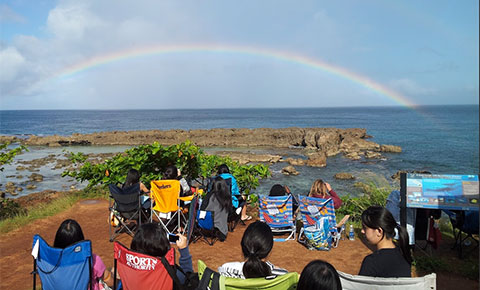
Stewardship
One of the best ways to experience a sanctuary is to get involved in helping to take care of it! Click here for more information on how you can contribute to stewardship efforts for these special places.


